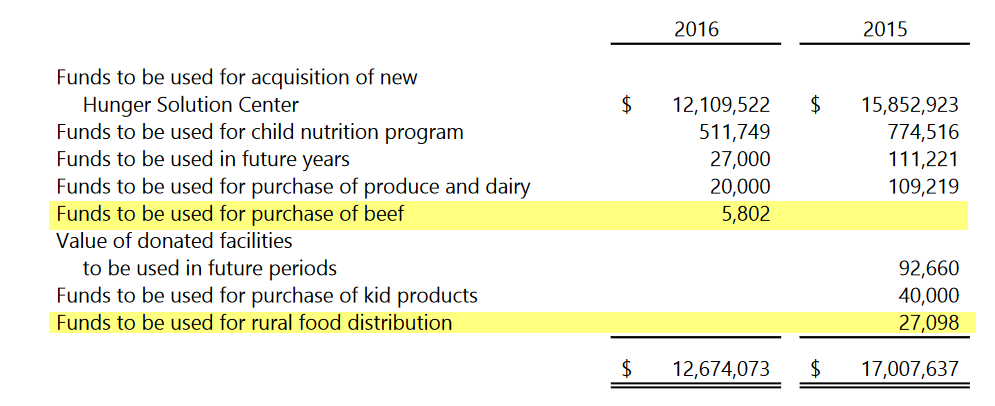Pears sell from the farm for $650 a ton. That's 32.5 cents a pound. Retail for fresh pears is $1.46 per pound. That's a 450% markup. In other words, your local farmer gets 20% of what you pay at the grocery.
And that’s gross income, before his cost for mortgages, buildings, roads, fences, equipment, seed, irrigation, crop management, labor, transportation, family salaries and health costs. 32 cents out of your $1.46. Gross income.
This is just one example that illustrates produce costs across the board.
My rural community has a 17.1% unemployment rate. 1 in 6 people are food insecure.
And yet, which economically-challenged communities are the most under-served by hunger missions like Feeding America?
Rural communities.
The vast bulk of food bank action happens in urban areas. They get huge donations of food from food processors, hospitals, grocery chains, bakeries.
Here's a screenshot from the financial statements of western Washington's major Feeding America partner, Food Lifeline. They receive $10 million in income per year and $75 million in food donations. Look at their budget for rural food delivery.

This is not to take away from the fine work they do for urban areas, but to illustrate that there's just NO SUPPORT for the rural communities that ACTUALLY GROW the fresh produce that is trickled into the hunger mission food chain.
Granted, a lot of these little hunger missions don't qualify for deliveries of fresh produce because they don't have walk-in coolers. Or they don't have a forklift. Or they don't have county-approved kitchens. But the fact remains that the bulk of what rural communities grow and their downstream doesn't sell is channeled into Utah-sized warehouses for delivery to urban area homeless and hunger shelters.
Solutions?
PS. I notice there's no tag for 'hunger' on eGullet.





